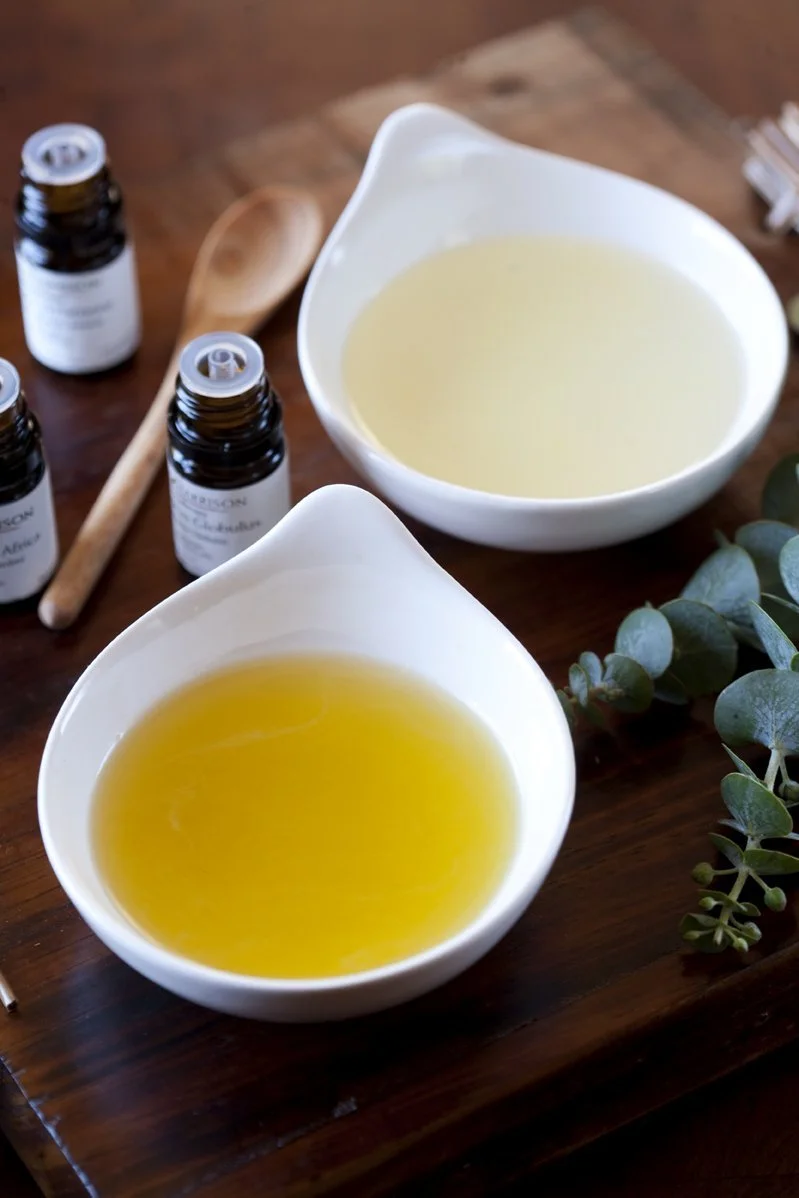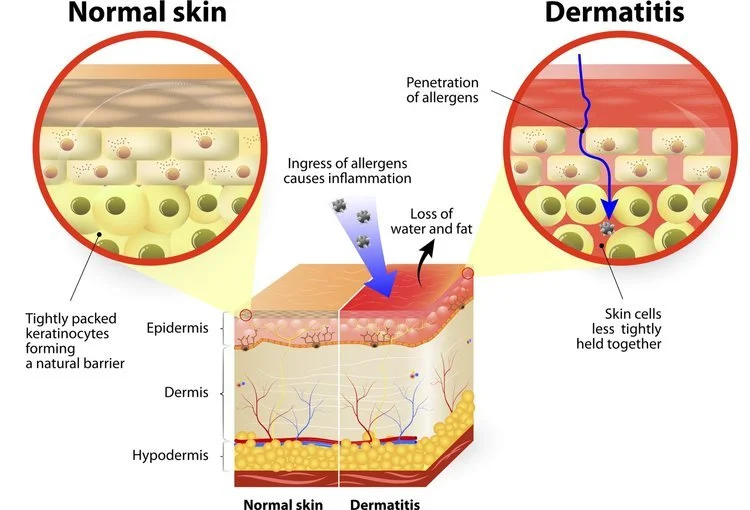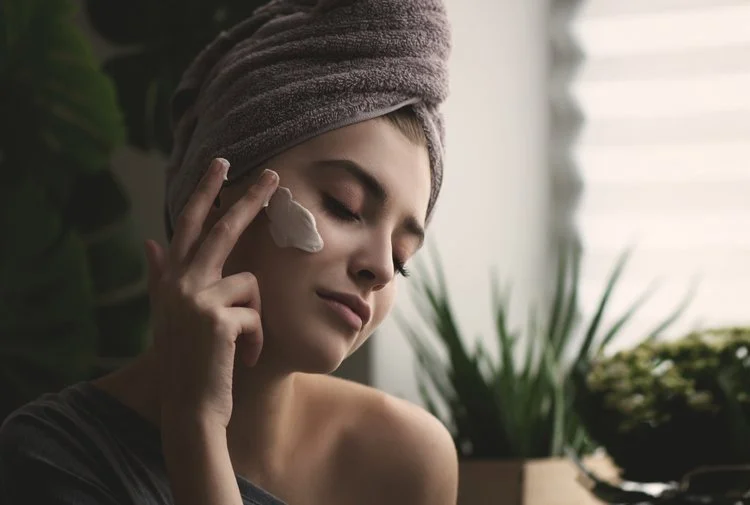Use Essential Oils in Facial Skin Care? Are You Crazy?
PART 2
This is part two of a two part series. Please read part one first if you haven’t already (well, that makes sense).
Essential oil sensitization
Essential oils are an effective addition to treatments and maintenance of the skin, and when used at lower concentrations (less than total 2%) in facial care pose little problem with most users. With that, there is enough relevant data that suggests possibilities for irritation and sensitization from topical facial care. The reason to separate facial care from overall body skin is due to the higher sensitivity and reactions in facial skin. In any repeated daily use, especially over 20% essential oil (less for known irritants), there is potential for sensitization on any part of the body. Saying potential doesn’t mean not to use essential oils in face care, it simply leads to using essential oils appropriately and avoiding the known irritants (which aren’t the best for repairing, conditioning or protecting the skin anyway).
There are documented allergens in essential oils. If you look at a skin care label sold in Europe you’ll see isolated compounds listed with the ingredients. These are not added to the formula. The compounds are naturally occurring in the essential oils used. The EU has deemed these specific compounds as allergens, that includes citral (especially the lemony smelling sub-group geranial), farnesol, geraniol, limonene and linalool. If these compounds are at a certain percentage in the formula they must be listed separately on the label. Some of these compounds don’t really have the best supportive data for being allergens, but, that’s the way it works sometime. Many experts in essential oil use do not think these compounds and the associated oils are allergens.
With so many essential oils that contain these compounds at significant amounts, it would be difficult to make a simple list of essential oils to avoid - good thing you don’t really need to avoid them in skin care. Some essential oils that would be on this list are oils that are great in skin care. Lavender, geranium, palmarosa and ylang ylang, all contain higher content of these compounds. That doesn’t mean they shouldn’t be used. If this data does give you an insecure feeling about using these oils, don’t use them. A logical precautionary approach would be to use these oils at lower concentration in a blend. The data suggests that the lower concentrations are less or not at all reactive.
The lower sensitivity concentrations listed in the literature are 20% to 50% essential oil in dilution. That’s a lot! The recommendations I give for topical dilution is much, much lower (1.5% for facial care and 2.5 to 5% for topical body care). These lower recommendations are wicked conservative and based on years of developing and selling serums and treatments shown to be effective and reduce potential for irritation and sensitization.
Sensitization can occur as an immediate response, as in contact dermatitis, or over a longer period of use
Sensitization can occur as an immediate response, as in contact dermatitis, or over a longer period of use as previously stated. I generally use the term sensitization for reactions that occur following repeated application over a period of time. The reaction comes primarily from the Langerhan cells that communicate with the immune system’s T-cells, telling them these compounds are potentially harmful. Terpenes and other small molecules elicit an immune response only when attached to a large carrier. These types of molecules are called haptens. Some essential oil terpenes are carried by the Langerhan cells, eventually appearing as an antigen to the responding T-cells. The repeated interaction with T-cells eventually triggers a release of histamine and an inflammatory response. If this happens stop using the formula and, likely, you will never be able to use it again once this reaction has occurred.
Section Review:
Essential oils are an effective addition to treatments and maintenance of the skin, and best used at concentrations less than total 2% to avoid sensitivity.
Use essential oils appropriately and avoid the known irritants (phenols, some aldehydes)
Documented allergens (according to the EU) in essential oils includes citral (especially the lemony smelling sub-group geranial), farnesol, geraniol, limonene and linalool.
The lower sensitivity concentrations listed in the literature are 20% to 50% essential oil in dilution
The recommendations I give for topical dilution is much, much lower (1.5% for facial care and 2.5 to 5% for topical body care)
Sensitization can occur as an immediate response, as in contact dermatitis, or over a longer period of time.
Sensitization is a repeated interaction with T-cells, stimulated by terpene haptens from essential oils, eventually triggering a release of histamine and an inflammatory response.
Avoiding reactions and sensitization
First stipulation to avoiding irritation is to not use known irritants. So, no poison ivy. Some of the irritant oils are obvious such as oregano, thyme thymol, and cinnamon. You’ll find lists of essential oils that are potential irritants online or in the literature. Try to find an educated relevant source and not a blog or company (including some dermatologists) that just repeat bad data or misinformation. Tisserand and Young’s Second Edition Essential Oil Safety book has a good chapter on this subject. Most commonly used essential oils are just fine when used at the lower concentrations (less than 2% total essential oil) recommended in facial care. Bay laurel, citruses, clove, lemongrass, tea tree, eucalyptus globulus or radiata, wintergreen and ylang ylang are some essential oils that may cause some individuals to have a reaction, especially when used at higher concentrations (over 5%). Keep in mind that reactions to ingredients and essential oils can be unique to the individual.
Secondly is the strong recommendation to use 1.5% or less essential oil content in your facial care. This is challenging to those who love fragrance. The other ingredients in a plant-based formula come with some strong odors, that are nutty, fatty and earthy. These aren’t commonly pleasant skin care aromas and the tendency is to increase the essential oil content to override the “off” odors. A good formulator is able to harmonize these odors with essential oils, rather than trying to cover them up. Over 2% essential oil in daily facial care has greater potential for sensitization.
There’s a strong recommendation to use 1.5% or less essential oil content in your facial care.
Section Review:
First stipulation to avoiding irritation is to not use known irritants, such as oregano, thyme thymol, and cinnamon. If used they should be diluted to non-irritant percentages (no higher than 25%, some say it can be 50%)
Tisserand and Young’s Second Edition Essential Oil Safety book has a good chapter on this subject.
Most commonly used essential oils are just fine when used at the lower concentrations (less than 2% total essential oil) recommended in facial care.
Bay laurel, citruses, clove, lemongrass, tea tree, eucalyptus globulus or radiata, and ylang ylang are some essential oils that may cause some individuals to have a reaction, especially when used at higher concentrations (over 5%)
Secondly is the strong recommendation to use 1.5% or less essential oil content in your facial care.
Over 2% essential oil in daily facial care has greater potential for sensitization.
A good formulator is able to harmonize odors from the carriers with essential oils, rather than trying to cover them up.
Absolutes, CO2 extracts, natural balance and quality
The essential oils discussed in this article are distilled or pressed from the fruit rind. Absolute (solvent) extraction has a separate concern due to a differing chemical structure and potential of contaminants. Supercritical carbon dioxide (CO2) extracts also have differing chemistry to essential oils. For those interested in avoiding essential oils in skin care, the CO2 extracts may be a good replacement for fragrance and therapeutic function similar to essential oils. There are lots of recommendations and use in cosmetics for these extracts, though the data is weak or missing on whether these carry the same cautions as essential oils. Supercritical CO2 extracts contain larger molecules and lesser amounts of monoterpene compounds which may assist them in avoiding irritation and sensitivity. Same rules apply to potentially irritating extracts though, cinnamon, oregano, etc, and the potential of irritation. Supercritical extracts would have much less potential for sensitization than essential oils, though, again, any active ingredient used on a daily basis has this potential.
If the natural balance of the essential oil has been altered either through additives (adulteration) or poor distillation, there is a greater chance for irritation, contact dermatitis and sensitization. Quality is all about the art of the distiller and leaving the oil “as-is” following distillation. A well distilled essential oil that hasn’t been adulterated pretty much defines quality essential oil. Keep in mind that a good quality oil would also be a more chemically complex oil (active), leaving the potential open for irritation.
Oxidation
If an oil oxidizes, called rancid when speaking of vegetable oils, the molecular structure goes through changes that make essential oils a potential and likely irritant (called peroxidation). This is different than the essential oil straight-out being an allergen. The way to avoid oxidation is to keep your oils covered, in a dark bottle away from heat (consistent temperature is best), and have an idea of the suggested expiration date. Citrus and needle tree oils are the most reactive to oxygen, which is the cause of oxidation. Frankincense and black pepper are also on this list, though much less likely to react if stored properly. From a chemistry perspective, it’s the oils with high amounts of monoterpene hydrocarbons, mainly pinene and limonene, that are most susceptible to oxidation, though def not exclusively.
Oxidation is actually the activity of free radical scavengers, so the fact that essential oils oxidize is a demonstration of their protective antioxidant activity (free radical scavenging), a good thing when on the skin and in the body. The reason to store oils properly is so that they can be used as antioxidants topically rather than having all their scavenging activity used up reacting with oxygen that gets into the bottle.
Photosensitive
Bergamot oil use comes with the precaution of photosensitivity, causing a reactive response with the skin and UV sun exposure. The response can be mild, causing irritation or dark spots (hyperpigmentation) to the extreme of causing severe sunburn. To a lesser extreme lemon, orange and lime may also be photosensitizing. These are best left out of skin care unless you know how to blend these to avoid photosensitivity and know the timing following application before being exposed to UVR (the sun).
It’s crazy good to use essential oils in skin care
The benefits of essential oils in facial and body care are extraordinary. Not only do they alleviate many skin conditions like eczema, acne, fine-lines, wrinkles, scars, parasitic infection and more, but they also are the most holistic ingredient with a diversity and full spectrum activity that includes regulating skin damaging emotions. When used with knowledge, intelligence and caution, the allergic, irritation and sensitization concerns can be eliminated. Essential oils are crazy good for the skin and over-all health of the body.



